14 July 2021 – The Portraits of Elizabeth I
 This lecture concentrates on the context, iconography and patronage of the portraits of Queen Elizabeth I. It will take a close look at paintings, prints and miniatures – from the earliest group portrait of 1544 to those at the end of her life – and will hopefully dispel some of the myths surrounding her representation.
This lecture concentrates on the context, iconography and patronage of the portraits of Queen Elizabeth I. It will take a close look at paintings, prints and miniatures – from the earliest group portrait of 1544 to those at the end of her life – and will hopefully dispel some of the myths surrounding her representation.
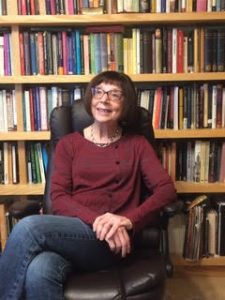 Lecturer: Susan Doran is Professor of Early Modern British History at the University of Oxford and a Senior Research Fellow at Jesus College and St Benet’s Hall. She has written widely on the reign of Elizabeth I and edited four catalogues of major exhibitions, including ‘Elizabeth and Mary, Royal Cousins, Rival Queens’, to be held at the British Library next October.
Lecturer: Susan Doran is Professor of Early Modern British History at the University of Oxford and a Senior Research Fellow at Jesus College and St Benet’s Hall. She has written widely on the reign of Elizabeth I and edited four catalogues of major exhibitions, including ‘Elizabeth and Mary, Royal Cousins, Rival Queens’, to be held at the British Library next October.
15 September 2021 – AGM + Lecture – Clara, Rhino Superstar, Artistic Inspiration and Wonder of the Grand Tour
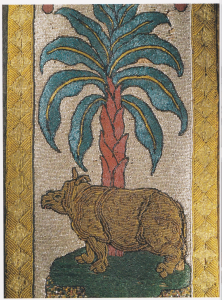 Brought up as a house pet by a Director of the Dutch East India Company in India, from a young age, Clara was shipped to Holland in 1741 and spent nearly 20 years touring Europe as one of the wonders of the age. She visited all the major Courts of Europe including to King Louis XV of France, dying in London in 1758. She was recorded in paintings, prints porcelain, bronze, clocks and even hair styles. This talk explores the charming story of this magnificent beast, only the third or fourth rhino to be seen in Europe, through contemporary records and works of art.
Brought up as a house pet by a Director of the Dutch East India Company in India, from a young age, Clara was shipped to Holland in 1741 and spent nearly 20 years touring Europe as one of the wonders of the age. She visited all the major Courts of Europe including to King Louis XV of France, dying in London in 1758. She was recorded in paintings, prints porcelain, bronze, clocks and even hair styles. This talk explores the charming story of this magnificent beast, only the third or fourth rhino to be seen in Europe, through contemporary records and works of art.
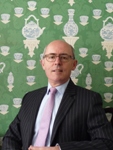 Lecturer: Clive Stewart-Lockhart studied on the Sotheby’s Works of Art course and has now been working in the fine art world for 47 years. Until recently he was a Director of Woolley and Wallis, the UK’s leading regional firm of auctioneers, in Salisbury, and was a specialist on the BBC Antiques Roadshow for 25 years between 1991 and 2016. Has also lectured on cruise ships as well as for many other groups, and in 2013 published a major article in the Journal of the Decorative Arts Society on Betty Joel. He is now an independent art advisor.
Lecturer: Clive Stewart-Lockhart studied on the Sotheby’s Works of Art course and has now been working in the fine art world for 47 years. Until recently he was a Director of Woolley and Wallis, the UK’s leading regional firm of auctioneers, in Salisbury, and was a specialist on the BBC Antiques Roadshow for 25 years between 1991 and 2016. Has also lectured on cruise ships as well as for many other groups, and in 2013 published a major article in the Journal of the Decorative Arts Society on Betty Joel. He is now an independent art advisor.
13 October 2021 – Titian – ‘The First Modern Artist’
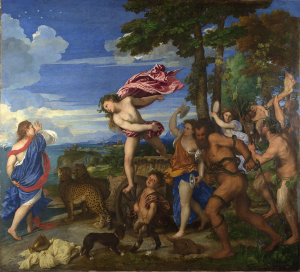 During a long, successful and immensely lucrative career, Titian established himself as the foremost painter of northern Italy. Training in the Bellini workshop, he developed the Venetian love of light and colour, but adding a sense of drama and immediacy that charged his religious, mythological and, most importantly, his portraits with a realism hitherto unknown to the arts. Tough, astute and ambitious, he is often seen as the first ‘modern’ painter, applying the pigments directly to the canvas without preparatory studies, drawing the figures as he invented the composition, building up the paint in thick sensual layers, drenched in colour and sunlight, a brilliant new style of painting that shaped the art of the Baroque and cast its influence over every painterly painter of the next four centuries
During a long, successful and immensely lucrative career, Titian established himself as the foremost painter of northern Italy. Training in the Bellini workshop, he developed the Venetian love of light and colour, but adding a sense of drama and immediacy that charged his religious, mythological and, most importantly, his portraits with a realism hitherto unknown to the arts. Tough, astute and ambitious, he is often seen as the first ‘modern’ painter, applying the pigments directly to the canvas without preparatory studies, drawing the figures as he invented the composition, building up the paint in thick sensual layers, drenched in colour and sunlight, a brilliant new style of painting that shaped the art of the Baroque and cast its influence over every painterly painter of the next four centuries
Lecturer: Douglas Skeggs read Fine Art at Magdalene College Cambridge and has been a 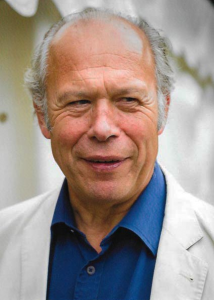 lecturer on paintings since 1980. In that time he has given over 8000 lectures to universities, colleges and art societies. He was the director of The New Academy of Art Studies for three years and is presently a regular lecturer at The Study Centre, Christie’s course ‘The History of Art Studies’ and other London courses. Three one-man exhibitions of his paintings have been `held in England and Switzerland. He has published five novels, which have been translated `into 8 foreign languages, and his book on Monet, River of Light, has sold 30,000 copies in `England, America and France.
lecturer on paintings since 1980. In that time he has given over 8000 lectures to universities, colleges and art societies. He was the director of The New Academy of Art Studies for three years and is presently a regular lecturer at The Study Centre, Christie’s course ‘The History of Art Studies’ and other London courses. Three one-man exhibitions of his paintings have been `held in England and Switzerland. He has published five novels, which have been translated `into 8 foreign languages, and his book on Monet, River of Light, has sold 30,000 copies in `England, America and France.
10 November 2021 – Photography as Fine Art
Should we accept that the very best photographs can be regarded as Fine Art? This question is at the heart of a lecture, which argues that photography can equal, not to say exceed, more traditional disciplines in the key genres of portraiture, landscape and still life. Photography, moreover, has carved its own area of excellence in depicting the human condition. All these ideas are discussed with reference to the work of some of the acknowledged masters of photography, including Henri Cartier-Bresson, Fay Godwin, Bill Brandt, Ansel Adams and Wolfgang Tillmans.
Lecturer: Brian Stater Brian Stater is a Senior Teaching Fellow at University College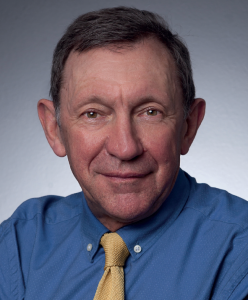 London, where he has lectured since 1997. His principal academic interest lies in he appreciation of architecture, while a strong personal enthusiasm is for photography. He therefore explores both business and pleasure by offering lectures on each of these subjects.
London, where he has lectured since 1997. His principal academic interest lies in he appreciation of architecture, while a strong personal enthusiasm is for photography. He therefore explores both business and pleasure by offering lectures on each of these subjects.
He has written on architecture for a wide range of publications and an exhibition of his own photographs has been held at UCL. He is a member of the Association of Historical and Fine Art Photography and he works with a pre-War Leica camera, as used by his great hero Henri Cartier-Bresson, and many others.
8 December 2021 – Angels from the Realms of Glory: The Wilton Diptych and the Roof of Westminster Hall
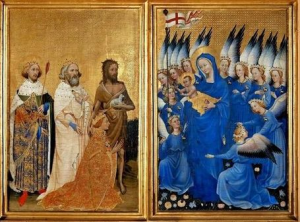 The Wilton Diptych is one of the most beautiful yet enigmatic paintings ever made and the hammer-beam angel roof of Westminster Hall has been described by the architectural historian John Harvey, as ‘the most outstanding individual work in the whole history of English art’.
The Wilton Diptych is one of the most beautiful yet enigmatic paintings ever made and the hammer-beam angel roof of Westminster Hall has been described by the architectural historian John Harvey, as ‘the most outstanding individual work in the whole history of English art’.
Both appear in the last decade of Richard II’s turbulent reign and they represent the high watermark of a period rich in artistic achievement. This lecture will focus on these two works of art but will also include other examples of art and architecture from late medieval England.
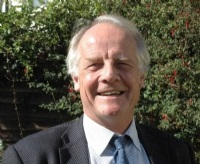
Lecturer: Mark Cottle Born on the Isles of Scilly and educated at Truro School, Cornwall, and Birmingham University. His career has been spent in education and training at home and abroad. He has lectured at Exeter College on Medieval and Tudor history, St Mark’s & St John’s University College, Plymouth, and at Bath University on Anglo Saxon and medieval England. Currently runs two small companies providing training and study breaks
12 January 2022 – Packing Up the Nation: Saving London’s Museums and Galleries in the Second World War
This is the gripping and sometimes hilarious story of how a band of heroic curators and eccentric custodians saved Britain’s national heritage during our Darkest Hour. As Hitler’s forces gathered on the other side of the Channel to threaten these islands, men and women from London’s national museums, galleries and archives forged extraordinary plans to evacuate their collections to safety. Utilising country houses from Buckinghamshire to Cumbria, tube tunnels, Welsh mines and Wiltshire quarries, a dedicated team of unlikely heroes packed up their greatest treasures in a race against time during the sweltering summer of 1939, dispatching them throughout the country on a series of secret wartime adventures, retold in this talk.
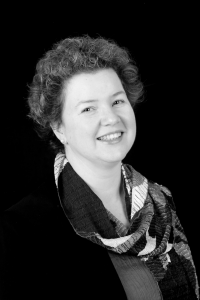 Lecturer: Dr Caroline Shenton is an archivist and historian. She was formerly Director of the Parliamentary Archives in London, and before that was a senior archivist at the National Archives. Caroline was Political Writer in Residence at Gladstone’s Library in 2017, has appeared at the Cheltenham, Hay and Henley literary festivals and on BBC radio and TV.
Lecturer: Dr Caroline Shenton is an archivist and historian. She was formerly Director of the Parliamentary Archives in London, and before that was a senior archivist at the National Archives. Caroline was Political Writer in Residence at Gladstone’s Library in 2017, has appeared at the Cheltenham, Hay and Henley literary festivals and on BBC radio and TV.
Caroline’s third book, National Treasures, will tell the extraordinary and sometimes hilarious stories behind the saving of London’s art and museum collections in World War Two.
9 February 2022 – Fabergé and the Firebird: Russian art under the last Tsar
By the beginning of the twentieth century, Russian culture had come of age. The reign of Nicholas II saw a creative explosion during which Russian creativity flourished as it never had before and was for the first time recognised abroad. Carl Fabergé opened a branch of his Petersburg jewellery business in London, Rachmaninoff performed in New York, Chagall exhibited in Berlin, and Diaghilev’s long crusade to win recognition for Russian culture abroad culminated in the creation of the Ballets Russes in Paris.
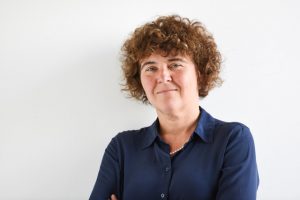 Lecturer: Dr Rosamund Bartlett is a writer, lecturer and translator whose work as a cultural historian ranges across the arts. She completed her doctorate at Oxford and is the author of several books, including biographies of Chekhov and Tolstoy, and a study of Wagner’s influence in Russia. She is currently writing a history of the Russian avant-garde. Her new translation of Anna Karenina for Oxford World’s Classics was published to acclaim in 2014. She has written on art, music and literature for publications such as The Daily Telegraph and Apollo, and has received commissions from institutions including the Royal Opera House, Tate UK, and the Salzburg Festival. Her lecturing work has taken her from the V&A and the National Theatre in London to the Art Gallery of New South Wales in Sydney, and she contributes regularly to Proms events and opera broadcasts on the BBC.
Lecturer: Dr Rosamund Bartlett is a writer, lecturer and translator whose work as a cultural historian ranges across the arts. She completed her doctorate at Oxford and is the author of several books, including biographies of Chekhov and Tolstoy, and a study of Wagner’s influence in Russia. She is currently writing a history of the Russian avant-garde. Her new translation of Anna Karenina for Oxford World’s Classics was published to acclaim in 2014. She has written on art, music and literature for publications such as The Daily Telegraph and Apollo, and has received commissions from institutions including the Royal Opera House, Tate UK, and the Salzburg Festival. Her lecturing work has taken her from the V&A and the National Theatre in London to the Art Gallery of New South Wales in Sydney, and she contributes regularly to Proms events and opera broadcasts on the BBC.
9 March 2022 – Singing in Secret: William Byrd, Queen Elizabeth, and worship under wraps
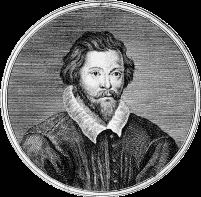 Four hundred years ago in July 1623 saw the death of the outstanding English composer William Byrd; prolific and successful, he was a favourite at the court of Queen Elizabeth. But Byrd led a complicated existence as a devout Catholic in troubled Tudor times, when to infringe strict religious rules ran the risk of imprisonment or even death. Forced underground, he created some of his most expressive music for fellow Catholics to use in secret worship. This talk celebrates the best of Byrd’s awe-inspiring work and reflects on what it means to create superb art in circumstances of great danger.
Four hundred years ago in July 1623 saw the death of the outstanding English composer William Byrd; prolific and successful, he was a favourite at the court of Queen Elizabeth. But Byrd led a complicated existence as a devout Catholic in troubled Tudor times, when to infringe strict religious rules ran the risk of imprisonment or even death. Forced underground, he created some of his most expressive music for fellow Catholics to use in secret worship. This talk celebrates the best of Byrd’s awe-inspiring work and reflects on what it means to create superb art in circumstances of great danger.
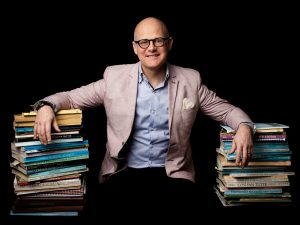 Lecturer: Sandy Burnett Lecturer: Sandy is one of the UK’s most versatile music commentators, enjoying a career that combines broadcasting, performing and lecturing. After studying at St Catharine’s College, Cambridge and working as music director for the RSC, National Theatre and in London’s West End, Sandy Burnett spent a decade as one of the core team of presenters on BBC Radio 3. He devises and leads cultural holidays all over the world, is the author of the Idler Guide to Classical Music, runs an online classical music appreciation Listening Club, is a highly sought after double bassist on the London jazz scene, and was appointed the Academy of Ancient Music’s Hogwood Fellow for the 2018-19 season
Lecturer: Sandy Burnett Lecturer: Sandy is one of the UK’s most versatile music commentators, enjoying a career that combines broadcasting, performing and lecturing. After studying at St Catharine’s College, Cambridge and working as music director for the RSC, National Theatre and in London’s West End, Sandy Burnett spent a decade as one of the core team of presenters on BBC Radio 3. He devises and leads cultural holidays all over the world, is the author of the Idler Guide to Classical Music, runs an online classical music appreciation Listening Club, is a highly sought after double bassist on the London jazz scene, and was appointed the Academy of Ancient Music’s Hogwood Fellow for the 2018-19 season
13 April 2022 – The Empty Chair in Art from Van Gogh to Ai Weiwei
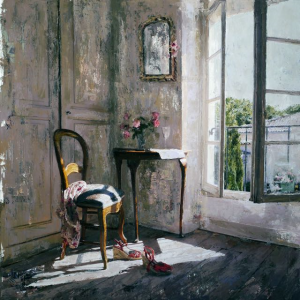 We all use chairs! But over the past 150 years, artists across the world have been using the humble chair as a conduit for profound ideas on themes from protest, absence and memory to domestic or everyday life.
We all use chairs! But over the past 150 years, artists across the world have been using the humble chair as a conduit for profound ideas on themes from protest, absence and memory to domestic or everyday life.
In Europe, Egon Schiele, René Magritte, Gerhard Richter, Joseph Beuys used empty chairs for personal expression, while in America, Andy Warhol, Robert Rauschenberg, Joseph Kosuth and Bruce Nauman used chairs to develop the exciting new artistic movements arising in the sixties.
The Palestinian artist, Mona Hatoum, adapted chairs to explore female identity and the Columbian artist, Doris Salcedo, stacked 1,550 between two buildings to remember anonymous victims of war.
These are just some of the many diverse artists and uses of chairs we will be looking at in this talk. And as in all my lectures, my personal connection as an artist, who has worked with chairs throughout her career, will aim to bring the subject to life.
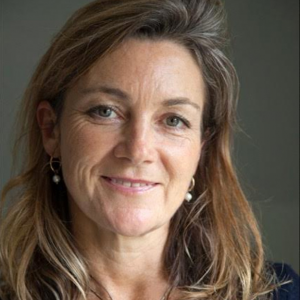 Lecturer: Angela Findlay is a professional artist, writer and freelance lecturer with a long career of teaching art in prisons in Germany and England. Her time ‘behind bars’ and later as Arts Coordinator of the London-based Koestler Arts, gave her many insights into the huge impact the arts can have in terms of rehabilitation. Her long career of teaching art in prisons and Young Offender Institutions in Germany and England, followed by her role as the former Arts Coordinator of the Koestler Trust in London, gave her many insights into the huge impact the arts can have in terms of rehabilitation. She is currently advising the Ministry of Justice and presenting the case for the arts to be included in their new rehabilitation and education policies.In the past decade Angela’s Anglo-German roots led her to discover and research Germany’s largely unknown but fascinating post-WWII process of remembrance. So completely different to the British one, the arts once again play a huge and vital role in expressing the apology and atonement that underlies the country’s unique culture of memorials and counter memorials.
Lecturer: Angela Findlay is a professional artist, writer and freelance lecturer with a long career of teaching art in prisons in Germany and England. Her time ‘behind bars’ and later as Arts Coordinator of the London-based Koestler Arts, gave her many insights into the huge impact the arts can have in terms of rehabilitation. Her long career of teaching art in prisons and Young Offender Institutions in Germany and England, followed by her role as the former Arts Coordinator of the Koestler Trust in London, gave her many insights into the huge impact the arts can have in terms of rehabilitation. She is currently advising the Ministry of Justice and presenting the case for the arts to be included in their new rehabilitation and education policies.In the past decade Angela’s Anglo-German roots led her to discover and research Germany’s largely unknown but fascinating post-WWII process of remembrance. So completely different to the British one, the arts once again play a huge and vital role in expressing the apology and atonement that underlies the country’s unique culture of memorials and counter memorials.
Angela has a BA(Hons) in Fine Art, a Diploma in Artistic Therapy (specialising in colour) and her paintings are widely exhibited both nationally and internationally.
11 May 2022 – A Child of 6 Could Do It! Cartoonists’ Views of Modern Art
 Modern art is often considered difficult, but it is much less so when seen through the eyes of some of the greatest cartoonists of the last one hundred and fifty years, who provide a humorous and sceptical but instructive guide to modern art from Courbet to the Britart of the 1990s. A chance to enjoy the insights and cartoons of (among others) Daumier, Larry, Thelwell, Matt, the wise guys at the New Yorker magazine and, of course, the immortal Giles. Collectively, they provide an absorbing, illuminating and, above all, a funny, revealing and sidelong view of 150 years of modern art.
Modern art is often considered difficult, but it is much less so when seen through the eyes of some of the greatest cartoonists of the last one hundred and fifty years, who provide a humorous and sceptical but instructive guide to modern art from Courbet to the Britart of the 1990s. A chance to enjoy the insights and cartoons of (among others) Daumier, Larry, Thelwell, Matt, the wise guys at the New Yorker magazine and, of course, the immortal Giles. Collectively, they provide an absorbing, illuminating and, above all, a funny, revealing and sidelong view of 150 years of modern art.
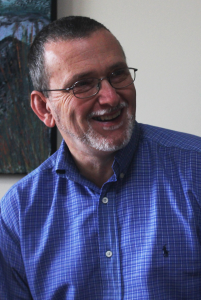 Lecturer: Barry Venning An historian of British art with a particular interest in the work of JMW Turner, on whom he has published widely. He was the BBC’s script consultant on Turner’s Fighting Temeraire and has recently taken part (2013) in a BBC documentary called The Genius of Turner: Painting the Industrial Revolution. His interests and his teaching extend from medieval architecture to contemporary British art. He is currently Associate Lecturer with the Open University and lecturing on a freelance basis for The Arts Society, Christie’s Education and other organisations
Lecturer: Barry Venning An historian of British art with a particular interest in the work of JMW Turner, on whom he has published widely. He was the BBC’s script consultant on Turner’s Fighting Temeraire and has recently taken part (2013) in a BBC documentary called The Genius of Turner: Painting the Industrial Revolution. His interests and his teaching extend from medieval architecture to contemporary British art. He is currently Associate Lecturer with the Open University and lecturing on a freelance basis for The Arts Society, Christie’s Education and other organisations
8 June 2022 – Contrapuntal Forms: Barbara Hepworth and Terry Frost
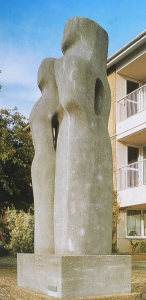 In 1950 Barbara Hepworth asked Terry Frost to be her studio assistant in carving the monumental stone sculpture, Contrapuntal Forms, the work she was sending to the 1951 Festival of Britain. She was already widely known for her abstract sculpture; he had recently graduated from Camberwell School of Art, a mature student returning to painting after spending much of the War in a Bavarian prison camp.
In 1950 Barbara Hepworth asked Terry Frost to be her studio assistant in carving the monumental stone sculpture, Contrapuntal Forms, the work she was sending to the 1951 Festival of Britain. She was already widely known for her abstract sculpture; he had recently graduated from Camberwell School of Art, a mature student returning to painting after spending much of the War in a Bavarian prison camp.
Neighbours on the Cornish coast at St Ives, the two also shared a passionate belief in art as the expression of emotion and experience, and in the power of abstraction to convey this most clearly. Contrapuntal Forms was one of the sculptural high points of the Festival, and in the years that followed, both Frost in painting and Hepworth in sculpture continued their explorations of form, space, shape and colour in the changing Cornish light, creating works which brought them international reputation and national honours.
Dame Barbara Hepworth died in 1975; Sir Terry Frost RA, born in 1915, in 2003. This lecture considers the achievement of these two remarkable artists, who brought to the cold geometries of abstraction an extra dimension of human warmth and vitality.
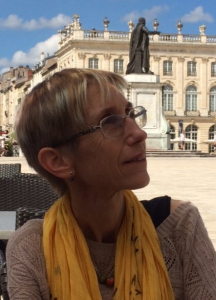 Lecturer: Justine Hopkins studied History of Art at the Courtauld Institute. Has lectured regularly for Tate Britain, Tate Modern, V&A, National Gallery and National Portrait Gallery, as well as to Oxbridge and Bristol Universities, Christie’s Fine Art, the Art Fund, and groups such as the Bradford on Avon Arts Association, Friends of Covent Garden and U3A. Publications include, amongst others, The Art of John Martin (2001), Michael Ayrton: A Biography (1994) and articles for Apollo Magazine and Modern Painters
Lecturer: Justine Hopkins studied History of Art at the Courtauld Institute. Has lectured regularly for Tate Britain, Tate Modern, V&A, National Gallery and National Portrait Gallery, as well as to Oxbridge and Bristol Universities, Christie’s Fine Art, the Art Fund, and groups such as the Bradford on Avon Arts Association, Friends of Covent Garden and U3A. Publications include, amongst others, The Art of John Martin (2001), Michael Ayrton: A Biography (1994) and articles for Apollo Magazine and Modern Painters
14 Sept 2022 – AGM + How to Steal a Million
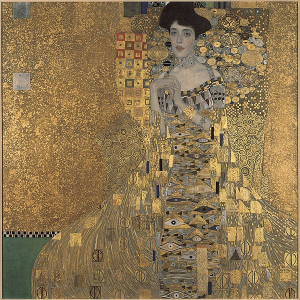 We have all heard about audacious art heists that are more like blockbuster movies than run-of-the-mill burglaries. In this lecture, we are going to look at famous art thefts, discuss what motivates art thieves as well as examine what aspects the thefts have in common. We will also look at where the burglars made mistakes, which enabled investigators to swoop in and recover stolen masterpieces. In many cases, the police sting operations were just as daring as the thefts.
We have all heard about audacious art heists that are more like blockbuster movies than run-of-the-mill burglaries. In this lecture, we are going to look at famous art thefts, discuss what motivates art thieves as well as examine what aspects the thefts have in common. We will also look at where the burglars made mistakes, which enabled investigators to swoop in and recover stolen masterpieces. In many cases, the police sting operations were just as daring as the thefts.
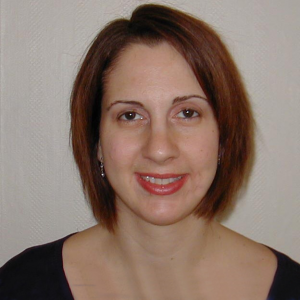 Lecturer: Shauna Isaac Shauna Isaac has been active in World War II art restitution for several years and has worked with families and government organisations to recover Nazi looted art. She set up the Central Registry on Looted Cultural Property and served as a member of the Working Group for the Holocaust Era Assets Conference in Prague. Shauna studied at the Courtauld Institute of Art in the UK and Smith College in the USA. She is a regular lecturer at the Sotheby’s Institute of Art. Her publications include articles for The Art Newspaper, The Times Literary Supplement and Art Quarterly. She is a contributor to the book Insiders/Outsiders: Refuges from Nazi Europe and their contribution to British Visual Culture.
Lecturer: Shauna Isaac Shauna Isaac has been active in World War II art restitution for several years and has worked with families and government organisations to recover Nazi looted art. She set up the Central Registry on Looted Cultural Property and served as a member of the Working Group for the Holocaust Era Assets Conference in Prague. Shauna studied at the Courtauld Institute of Art in the UK and Smith College in the USA. She is a regular lecturer at the Sotheby’s Institute of Art. Her publications include articles for The Art Newspaper, The Times Literary Supplement and Art Quarterly. She is a contributor to the book Insiders/Outsiders: Refuges from Nazi Europe and their contribution to British Visual Culture.

